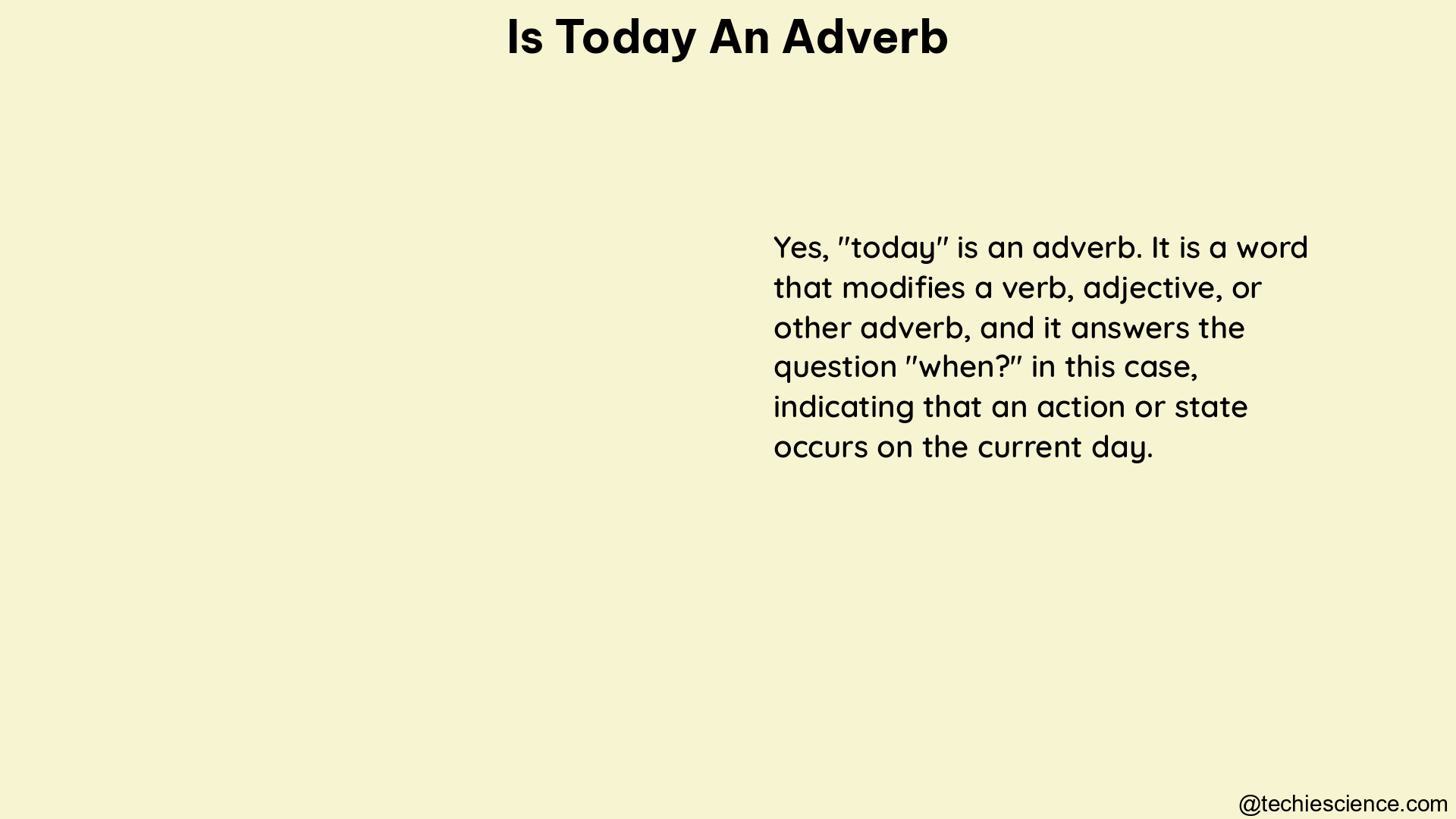The word “today” is a versatile term that can function as both a noun and an adverb, depending on the context in which it is used. Understanding the different roles “today” can play in a sentence is crucial for effective communication and proper grammar usage.
As a Noun
When “today” is used as a noun, it refers to the current day or the present time. In this capacity, “today” can serve as the subject, object, or complement of a sentence. Here are some examples:
- Subject: “Today was a beautiful day to go for a hike.”
- Object: “I read the newspaper from today.”
- Complement: “The event is scheduled for today.”
In these instances, “today” is a noun that answers the question “What?” or “Which one?”, making it an essential part of the sentence’s structure.
As an Adverb

On the other hand, “today” can also function as an adverb, modifying verbs, adjectives, or other adverbs to provide information about time. When used as an adverb, “today” typically answers questions like “When?” or “To what extent?”. Here are some examples:
- Verb Modifier: “The company announced its new product line today.”
- Adjective Modifier: “The weather is unusually warm today.”
- Adverb Modifier: “I’ll be leaving for the conference later today.”
In these cases, “today” provides additional information about the timing or extent of the action, characteristic, or other adverbial element in the sentence.
Distinguishing Nouns and Adverbs
To determine whether “today” is functioning as a noun or an adverb, consider the following guidelines:
- Noun: “Today” is a noun when it can be replaced by other nouns like “the day” or “this day” without changing the meaning of the sentence.
- Adverb: “Today” is an adverb when it modifies a verb, adjective, or another adverb, providing information about when, where, how, why, or to what extent the action or characteristic occurs.
Here are some additional examples to help illustrate the distinction:
- “Today’s weather is sunny.” (Noun)
- “I’ll see you today.” (Adverb)
- “The company made an announcement today.” (Adverb)
- “Today is the first day of the new semester.” (Noun)
Advanced Considerations
While the basic guidelines above can help identify the role of “today” in a sentence, there are some more nuanced situations to consider:
-
Elliptical Constructions: In some cases, “today” may be used in an elliptical construction, where a verb or other element is implied but not explicitly stated. For example, “I’ll see you today (for lunch).” In this case, “today” is still functioning as an adverb, even though the full phrase is not explicitly stated.
-
Temporal Phrases: “Today” can also be part of a larger temporal phrase, such as “today week” or “today month,” which indicate a specific time relative to the current day. In these instances, “today” is still acting as an adverb, modifying the larger temporal phrase.
-
Idiomatic Expressions: There are some idiomatic expressions that incorporate “today,” such as “today’s the day” or “today’s your lucky day.” In these cases, the meaning of “today” may not be as straightforward, and the expression should be considered as a whole.
Conclusion
In summary, the word “today” can function as both a noun and an adverb, depending on the context in which it is used. Understanding the different roles “today” can play is essential for effective communication and proper grammar usage. By applying the guidelines outlined in this article, you can confidently identify and use “today” correctly in your written and spoken English.
References:
- https://homework.study.com/explanation/what-part-of-speech-is-today.html
- https://www.oxfordlearnersdictionaries.com/us/definition/english/today_1
- https://www.wyzant.com/resources/answers/707030/when-is-today-a-noun-or-adverb-or-adjective
- https://www.merriam-webster.com/dictionary/today

Hi, I am Srishti Mukherjee. I have completed my M.A. in English.
I always like to explore new zones in the field of English Literature
Apart from this, I like to read Novels and watch movies.